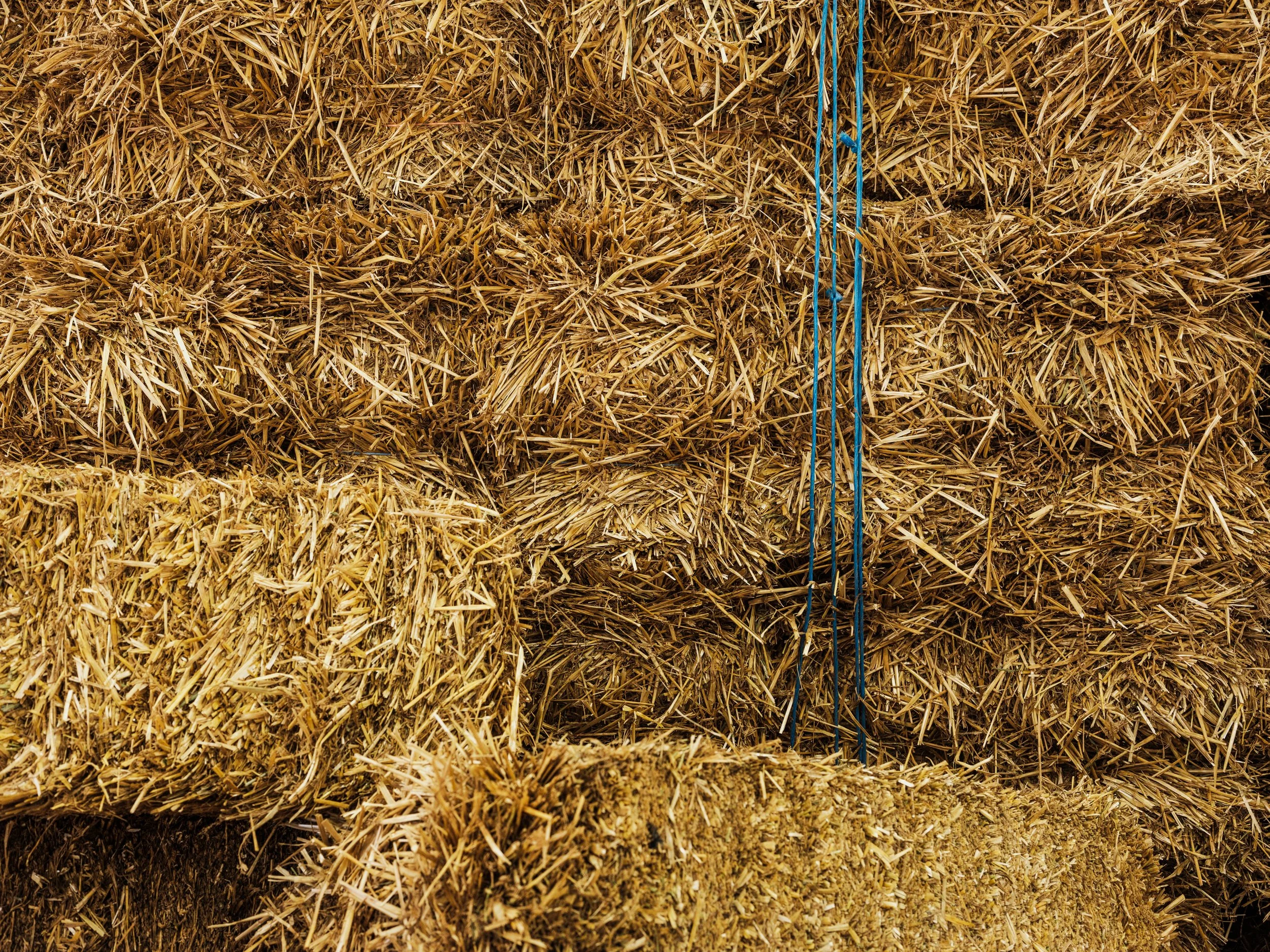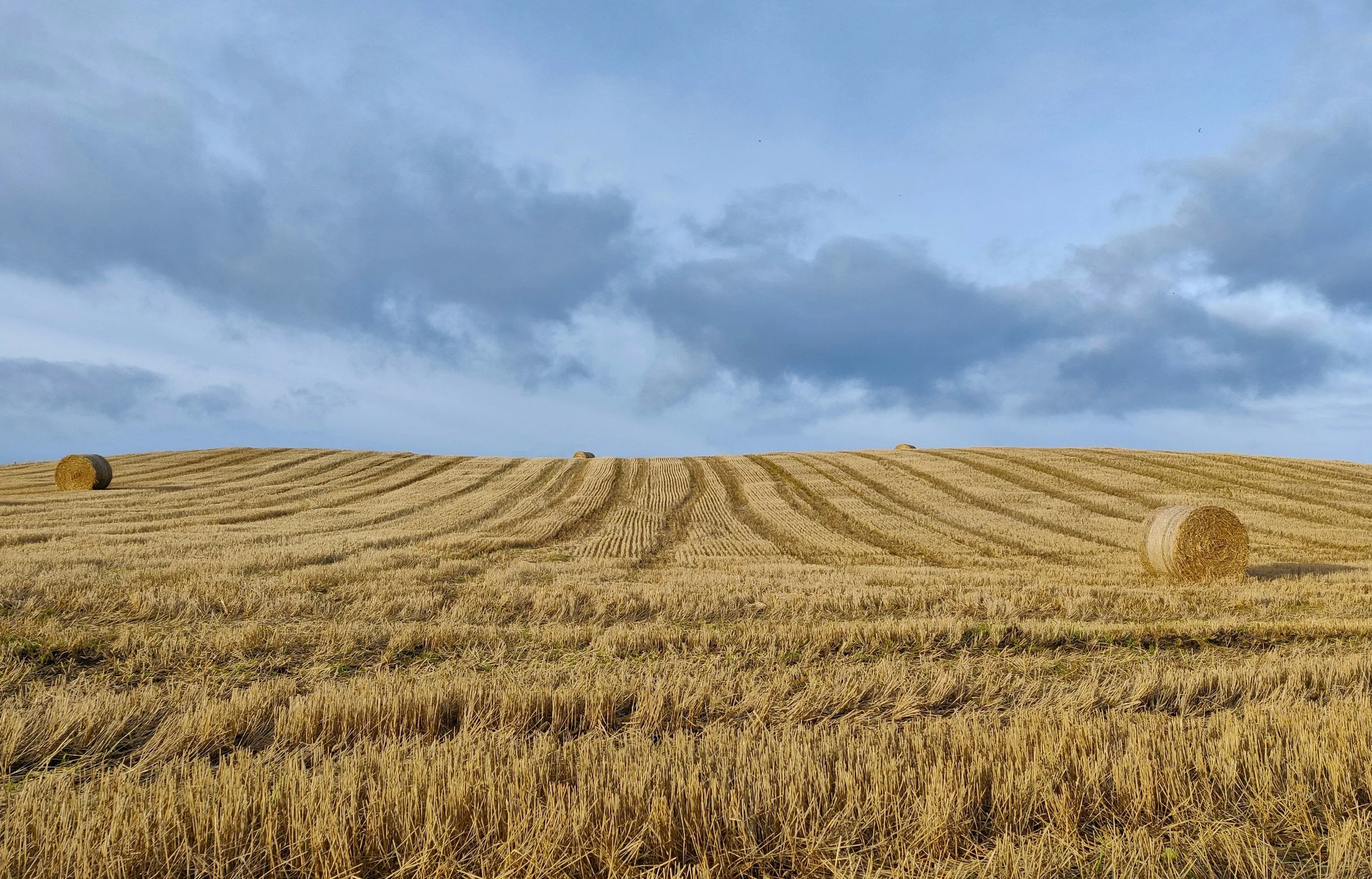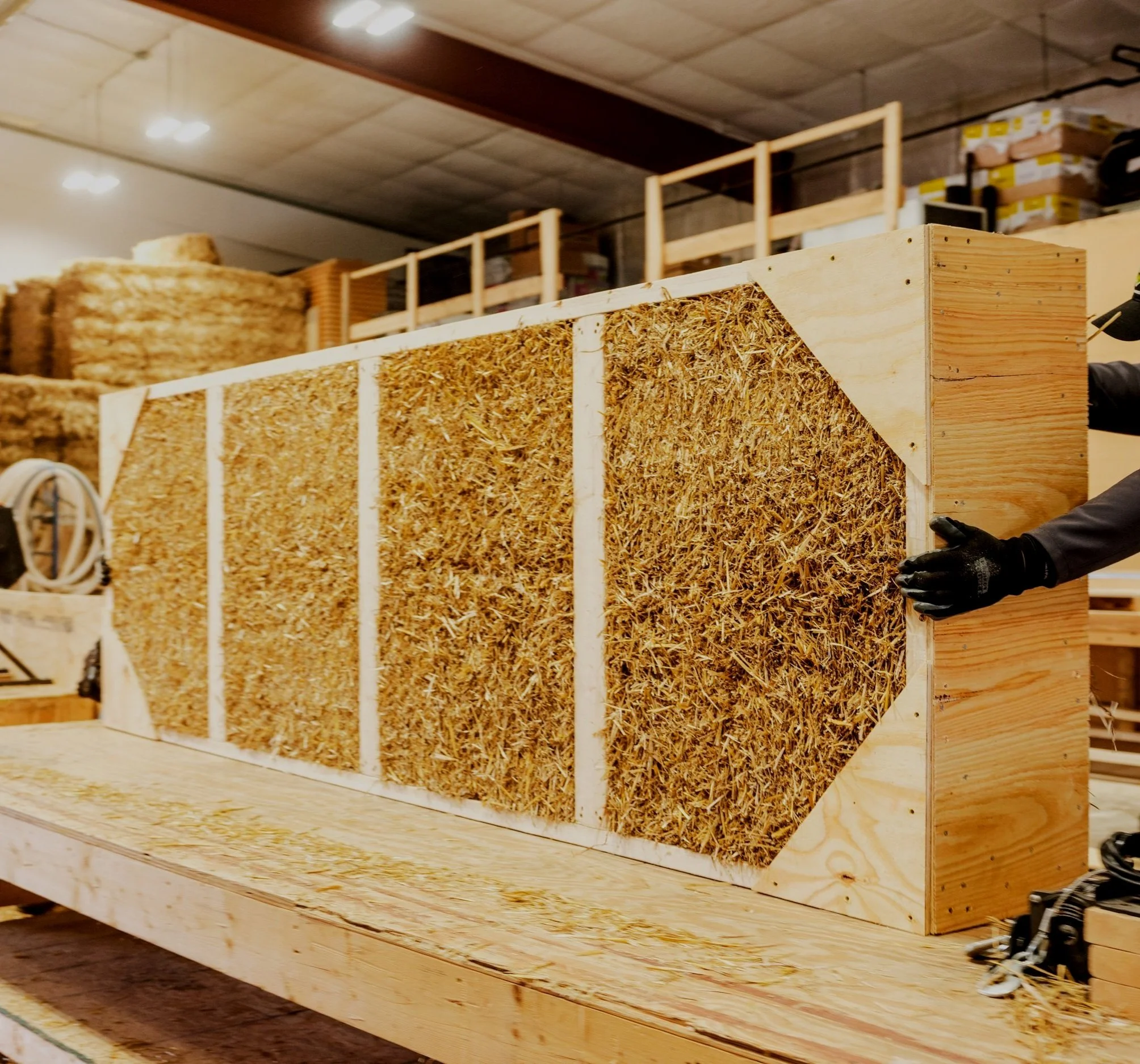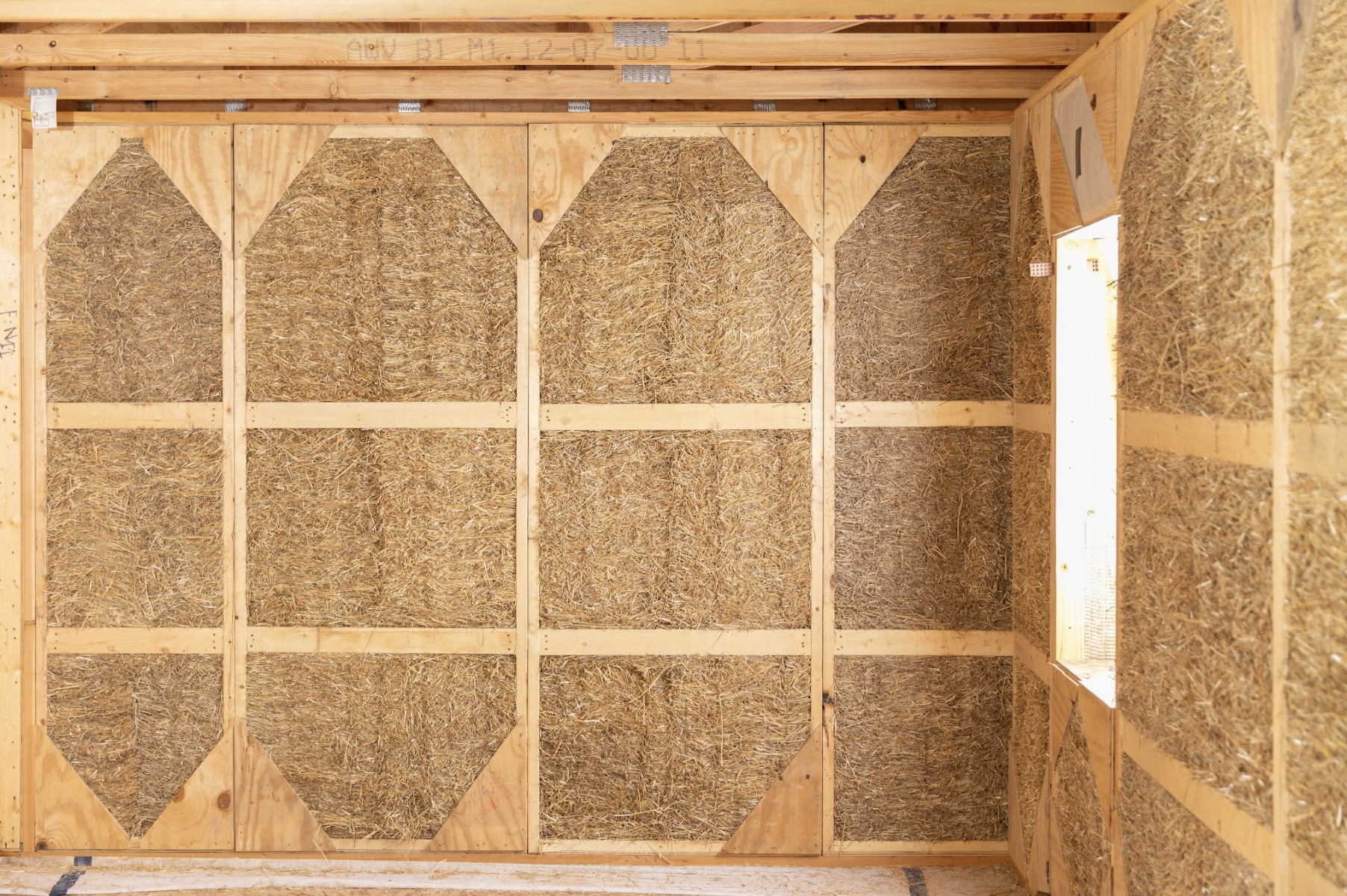Harvesting Straw for High-Performance, Carbon-Negative Insulation
When you think of straw, your mind might conjure up images of golden fields after harvest, bales stacked high in barns, or even classic thatched roofs. But straw is more than just a picturesque symbol of rural life—it’s also one of the most exciting renewable materials available for building high-performance, carbon-negative homes.
At New Frameworks, we’re proud to work with straw in a way that’s both rooted in tradition and radically forward-looking. When packed into our high-performance wall systems, straw offers insulation levels that rival or outperform conventional materials, while storing more carbon than it emits. In this post, we’ll take you through where straw comes from, how it’s harvested and tested for use in construction, and why it’s a game-changing material for the future of climate-responsive housing.
What Is Straw, and Where Does It Come From?
Straw is the dry stalk left behind after cereal grains like wheat, rye, oats, and barley have been harvested. These grains are grown around the world as a staple part of our food system, meaning the production of straw is intrinsically linked to global agriculture. Every time a farmer harvests a field of wheat or oats for food, what remains after threshing—when the edible grain is separated—is the straw.
What’s remarkable about this leftover stem is that it’s not just waste; it’s a valuable resource. Straw is composed of the woody, hollow stalks of grain plants, and is predominantly made up of cellulose—a strong, fibrous compound that forms the basic building block of plant walls.
Cellulose is what gives plants like trees and grasses their structure. It’s similar in composition and function to the fibers in wood, but found in agricultural stalks like straw. Just like wood, cellulose is made of long chains of sugar molecules arranged in tight bundles, which gives straw its lightweight strength and durability. This cellulosic nature means straw is both durable and vapor permeable—two key characteristics for use as effective high-performance insulation.
Straw as a Renewable Resource
Because straw is a byproduct of annual food crop production, it is inherently renewable. We grow grains every year, which means we produce straw every year. That’s a critical difference from fossil-derived or mineral-based insulation materials, which rely on non-renewable extraction and high-energy manufacturing processes.
But straw’s potential goes even further. During the growing season, grain crops capture atmospheric carbon dioxide (CO₂) through photosynthesis and store it in their stalks, roots, and leaves. Normally, when straw is left in the field to decompose—or is burned, as it often is in large-scale agriculture—this carbon is released back into the atmosphere, contributing to global warming.
By intercepting this decomposition cycle and using the straw in construction, we effectively trap that carbon in the building material for the lifetime of the structure. This process makes straw insulation a form of biogenic carbon storage—keeping carbon out of the atmosphere and locked into our buildings.
When we say that straw is a carbon sink, we mean that it actively removes carbon from the atmosphere and stores it in a solid form. A carbon-negative material, like straw in the context of our insulation panels, goes even further: it stores more carbon than is emitted during its entire lifecycle, including harvesting, processing, transportation, and installation. That means every panel we build with straw not only avoids emissions—it actually helps reduce them.
Related: See the UN report on biogenic building materials for the future
Quality Control: Testing Straw for Moisture
Straw may be abundant, but it’s not all created equal. To be suitable for use in high-performance insulation systems, straw must meet specific standards—especially when it comes to moisture content.
Prolonged exposure to moisture is the enemy of any building material, natural or synthetic. For straw specifically, because it is a naturally grown and harvested material instead of a synthetic insulation material, if straw is too wet when baled or stored, it can mold or rot—compromising both its structural performance and its longevity. That’s why we and our farming partners take a three-step approach to moisture testing:
Before Baling: Farmers test the straw in the field to ensure it’s sufficiently dry before baling.
After Baling: Moisture levels are checked again in the bales to confirm they remain within the acceptable range.
At Our Workshop: When the straw arrives at New Frameworks, we test it once more to ensure consistency and quality before incorporating it into our panels.
This rigorous process guarantees that the straw we use is dry and ready for long-term, high-performance use.
From Field to Wall: Creating Straw Structural Insulated Panels
Once the straw has passed all moisture checks, it’s ready to become something extraordinary. At New Frameworks, we dense-pack straw into double-stud wall frames, creating what we call Straw-Structural Insulated Panels. These panels are prefabricated at our workshop, allowing us to control quality, reduce waste, and speed up construction timelines.
In these panels, the straw is packed at a high density—usually around 9 pounds per cubic foot—giving it great insulating power. When dense-packed into the double stud wall frame and sheathed in-factory, the straw panel functions as both structure and insulation, eliminating the need for separate framing and insulating steps on-site.
The performance of these panels is impressive:
An R-value of R-38. That’s more than double what’s required by most residential energy codes.
Straw panels are moisture-regulating, helping buildings manage moisture effectively, reducing the risk of condensation and mold.
They are naturally pest-resistant when dense-packed, due to the lack of air and room to burrow within the insulation.
With dense packing and airtight sealing, the panels are highly fire-resistant, with lab testing showing excellent fire safety ratings.
Cost and Availability: Straw Panels Go Mainstream
What’s most exciting is that this isn’t just an experimental approach—it’s happening right now, across the United States and beyond. More and more builders, architects, and homeowners are actively enjoying the benefits of straw-based construction, and it’s become a viable, scalable option for climate-conscious building.
And despite its many advantages, straw panel construction is also cost-comparable to site built traditional double-stud wall assemblies filled with blown-in cellulose. In other words, you can have better carbon performance and shorter construction timelines—for the same cost.
Plus, prefabricated panels mean greater consistency and control in the panel systems, reduced site labor, and less weather-related risk. Panels can be assembled in our shop in just a few weeks, and installed on-site in a matter of days—accelerating the building process while maintaining the highest quality standards.
Building the Future—One Straw Panel at a Time
Straw might seem like a humble material, but it’s poised to play a major role in solving some of the biggest challenges of our time. By turning an agricultural byproduct into a carbon-negative, high-performance building material, we’re creating a regenerative construction system that aligns with both planetary and human health.
At New Frameworks, we believe the materials we build with should do more than just meet code—they should actively improve the world we live in. Straw insulation lets us do just that. With every panel we build, we’re locking carbon away, reducing emissions, supporting local farmers, and creating homes that are healthy, high-performing, durable, and beautiful.
We’ve even created both a training program and subsequent network of straw panel manufacturers to make these products more accessible nationwide. Learn more by visiting our pages about the Seed Program and Seed Collaborative.
Want to learn more about our Straw Panels? Drop us a line and get in touch!







